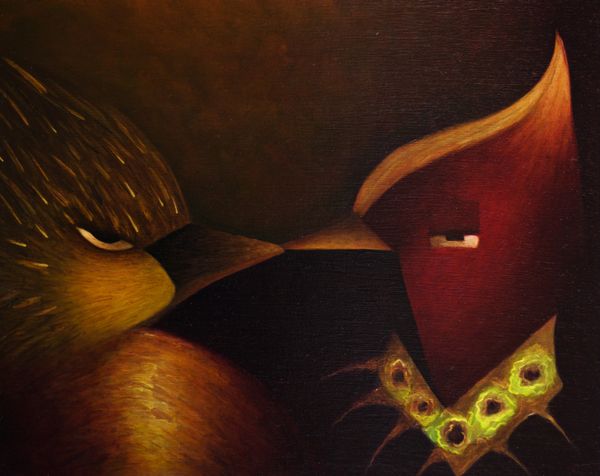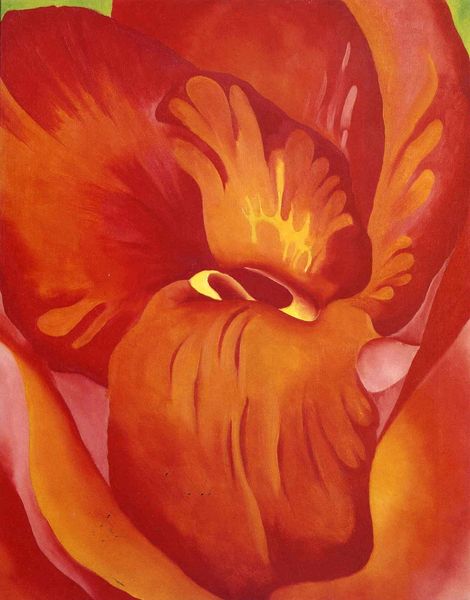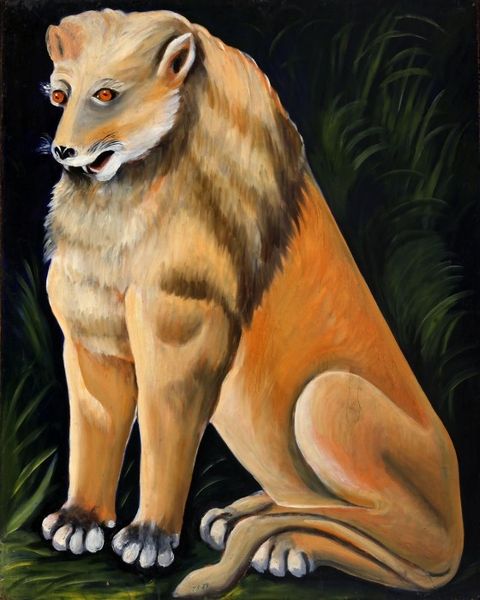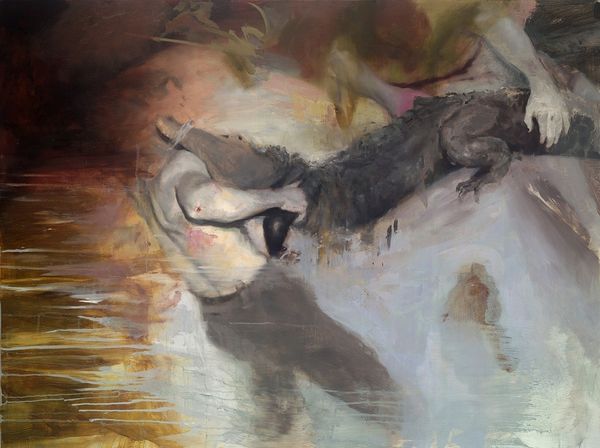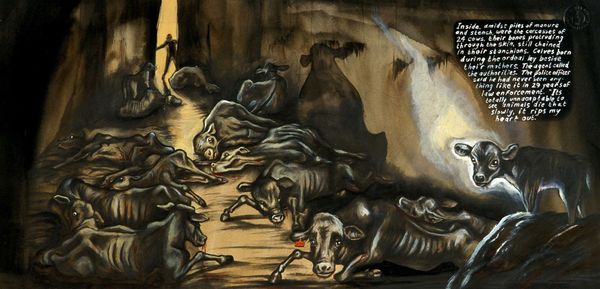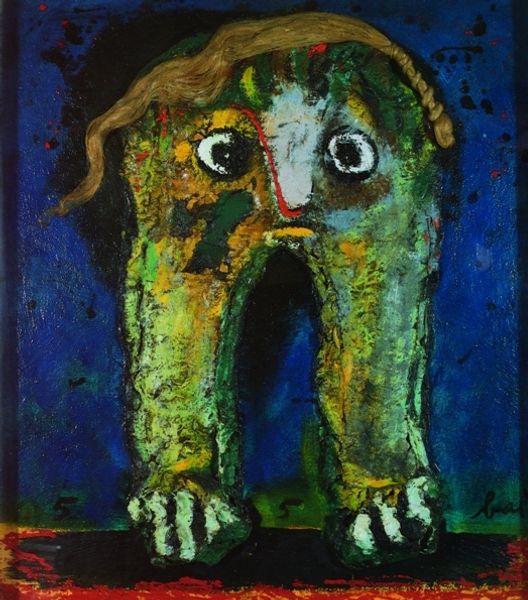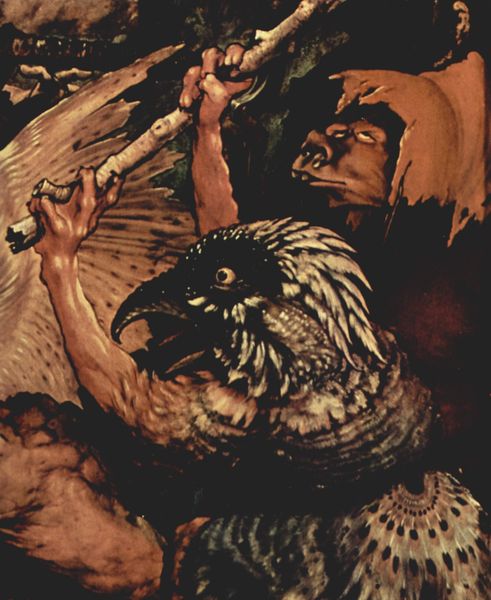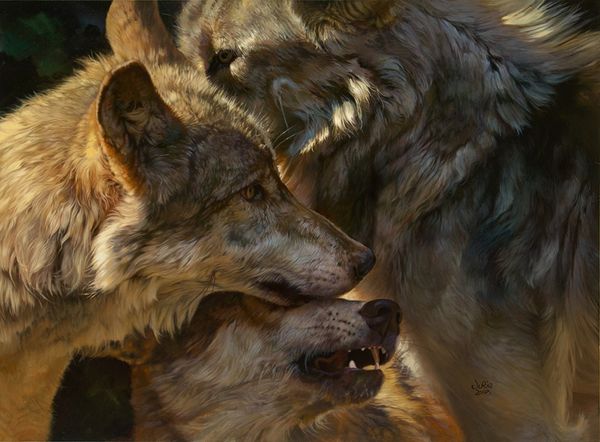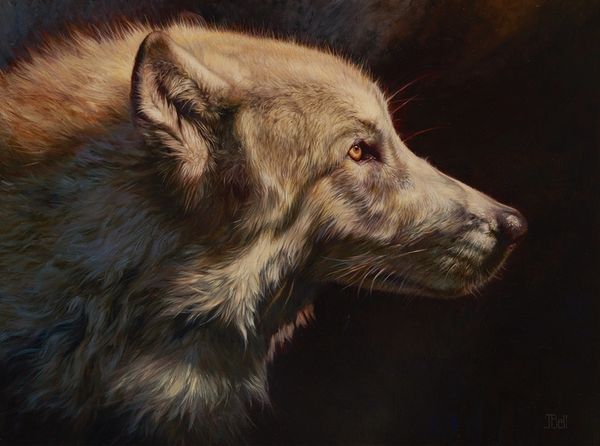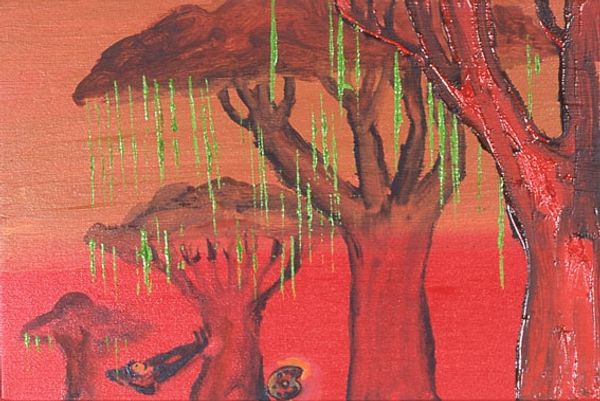
Dimensions: 120 x 50 cm
Copyright: Paulo Tercio,Fair Use
Editor: So, here we have Paulo Tercio’s "Aleijadinho Et Eius Proditores - Left Panel," painted in 2014, using oil paints. The stark features of the figure are so intriguing, but unsettling at the same time. What strikes you when you look at this piece? Curator: Immediately, I'm drawn to the texture of the paint itself. See how Tercio builds up these layers of oil? That's deliberate. The materiality speaks to a longer, almost archaeological process of creation. How does this relate, do you think, to the title referencing the Baroque sculptor Aleijadinho and ideas of betrayal? Editor: That's interesting! I hadn't really connected the physicality of the painting to the themes in the title. Perhaps the layered paint symbolizes layers of history, or even layers of deception surrounding the story of Aleijadinho? Curator: Precisely. The rough texture challenges traditional notions of a smooth, refined portrait. What if this "roughness" alludes to the social and economic conditions of artistic production? Editor: I suppose the use of oil paint itself is significant then. It's a traditional medium, often associated with wealth and power, but the expressionistic style kind of subverts those associations, right? It almost democratizes the materials. Curator: Exactly! This is a contemporary artist wrestling with the legacy of colonial Brazil, not through polished representation, but through a material engagement that questions the very means of art-making. And in so doing, they prompt a necessary engagement with difficult legacies. What do you make of that contrast now? Editor: It changes everything. Now, I see a conversation about the economic and cultural forces that shape art, not just a striking image. Thanks, that was truly insightful. Curator: My pleasure. Examining the material reality underlying even the most seemingly straightforward artworks unlocks deeper levels of meaning.
Comments
No comments
Be the first to comment and join the conversation on the ultimate creative platform.

